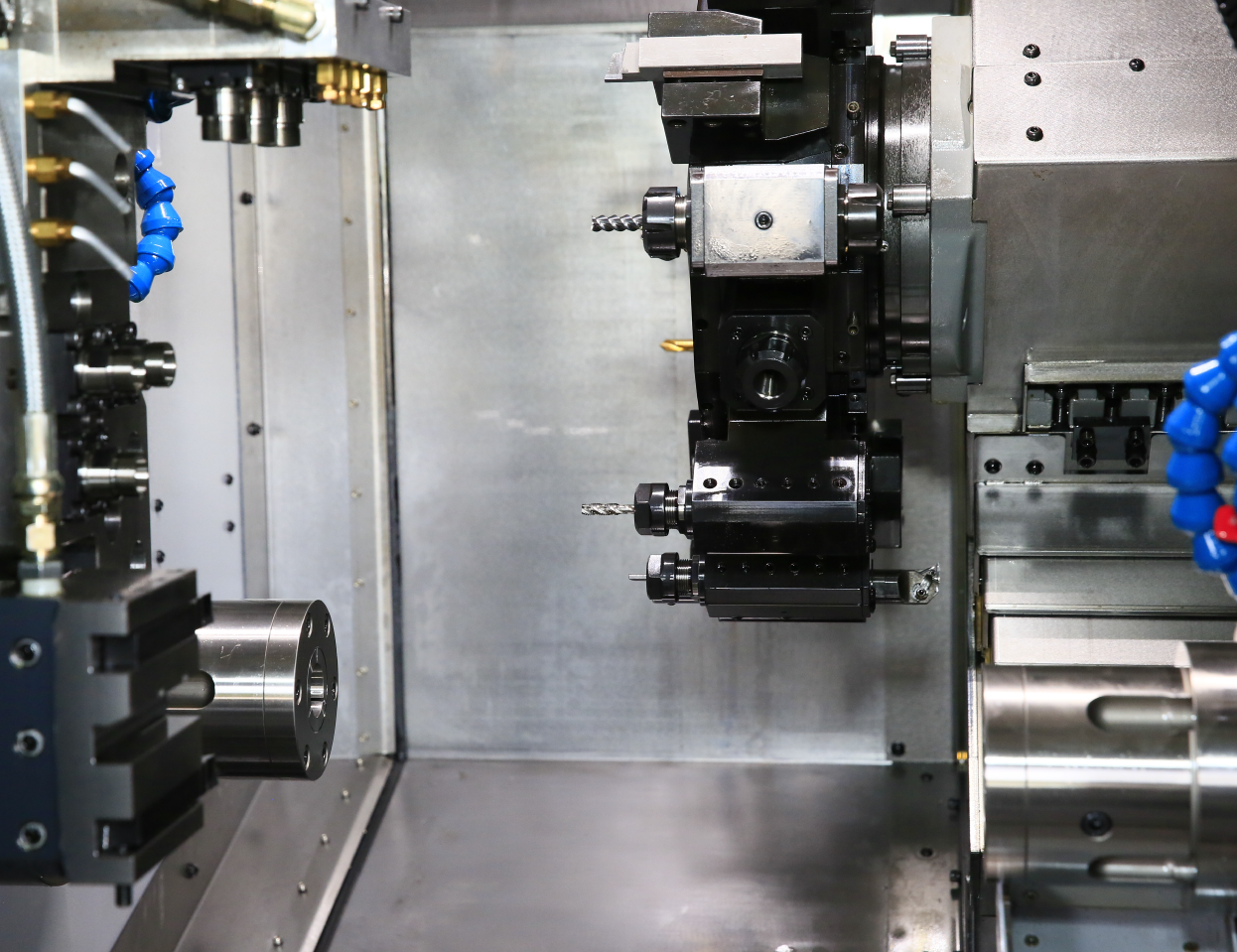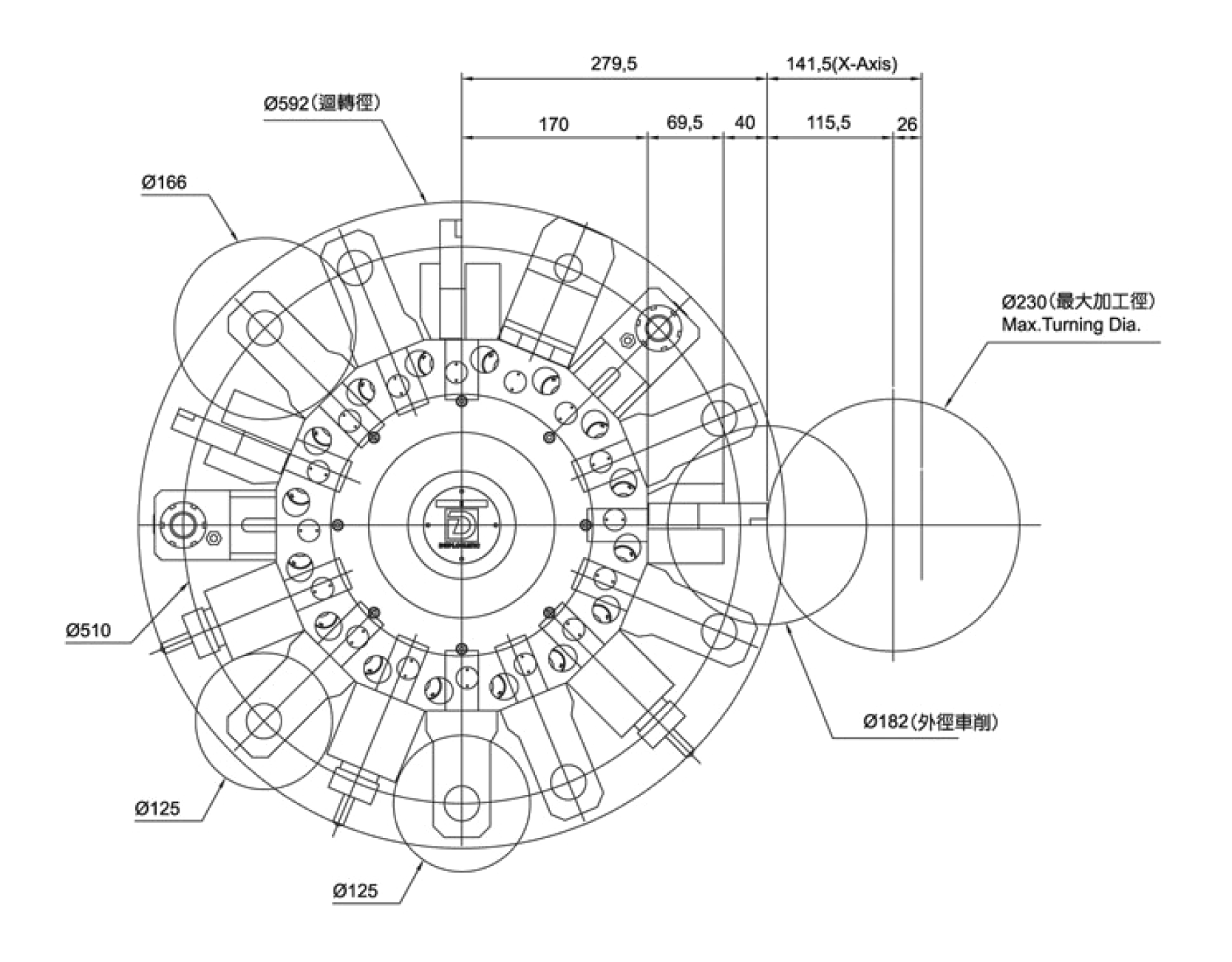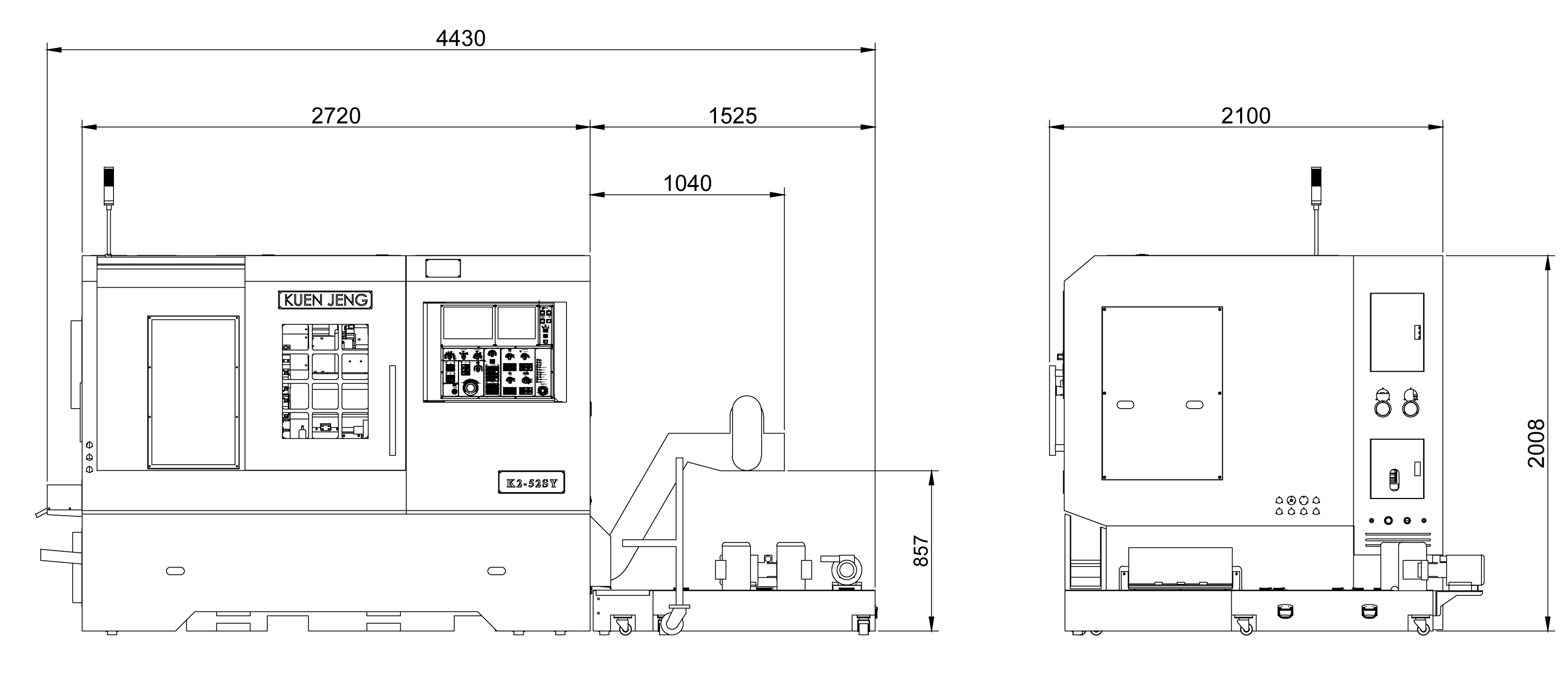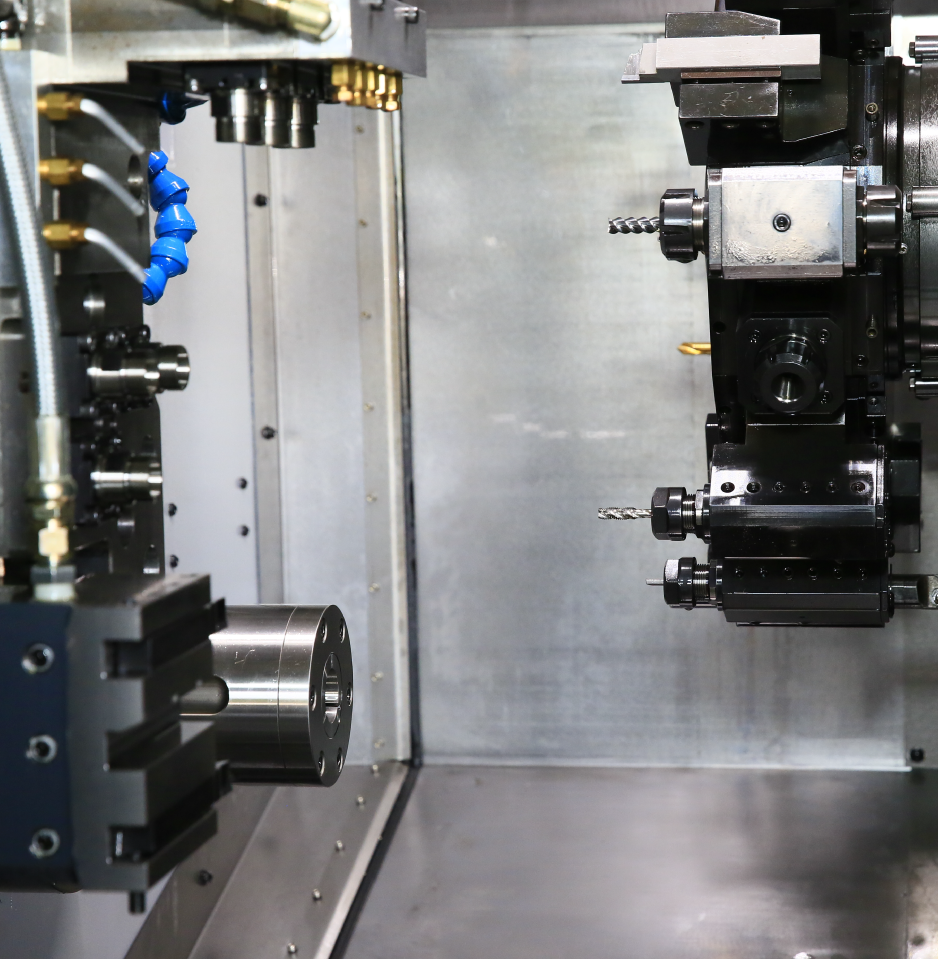Please choose model

K2-52SY / K2-52
Double System, Double Spindle, Double Y-axis, Multi-Tasking CNC Lathe
Specifications

Main Structure
• Max. turning diameter K2-52SY: Ø 230 mm (power turret);
K2-52: Ø 348 mm (hydraulic turret).
• Max. turning length 390 mm.
• 45° Slant-Bed Lathe.
• Monobloc Meehanna Cast Iron (GB300) Bed.
• Using FANUC αP series wide-range spindle motor can provide high torque at low speed.
• Using Duplomatic 16T power turret. (K2-52 with hydraulic turret)
• X1, Y1, Z1, Y2 axes use Precision Linear Guideway.
• X2 & Z2 axes are equipped with high rigidity box guideway.
• Fanuc 0i-TF controller / 10.4” LCD.

Gang Tooling Systems for Sub-Spindle
• 3 × O.D. Turning Tool ( 20 mm).
• 5 × I.D. Turning Tool (Ø 25 mm).
• 3 × Axial Live Tooling (ER16).
• 3 × Radial Live Tooling (ER16).

X2 & Z2 axes are equipped with high rigidity box way
X2 & Z2 axes use high rigidity box guideway , which can improve the rigidity of the sliding head, and increase the chip space (compare with linear guideway), and make the chip discharge more smoothly.

Power Turret
• Using Duplomatic 16T power turret imported from Italy.
• Specification of tool holder: VDI-30 Axial / DIN-5480.
• Radial tool-disc and L-shaped body are suitable for main and sub-spindle machining, and can increase the length of the rear side tool.
• Powered by FANUC α2 spindle motor 2.2 / 3.7 kW.
Tool Interference Diagram

K2-52SY (Power Turret)

K2-52 (Hydraulic Turret)
External Dimensions

※Notes:
1. Our company adheres to the spirit of innovation , good spirit of continuous improvement and development of new features, while keeping the right to change the specifications of the catalog. If there is a change without notice, welcome to contact us.
2. The dimensions and data recorded in the catalog may differ from the actual data generated depending on the processing, environment, and tool conditions.



